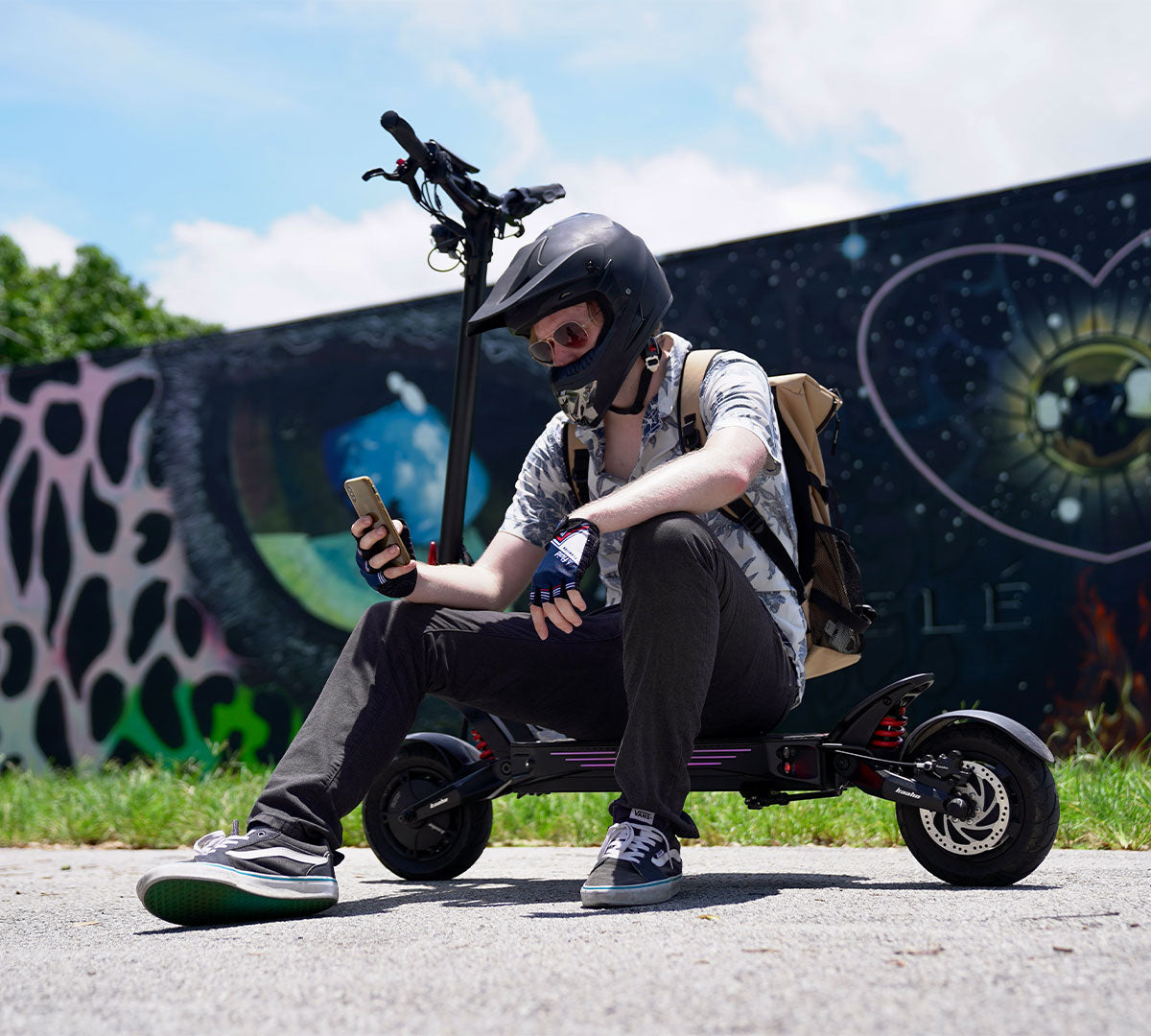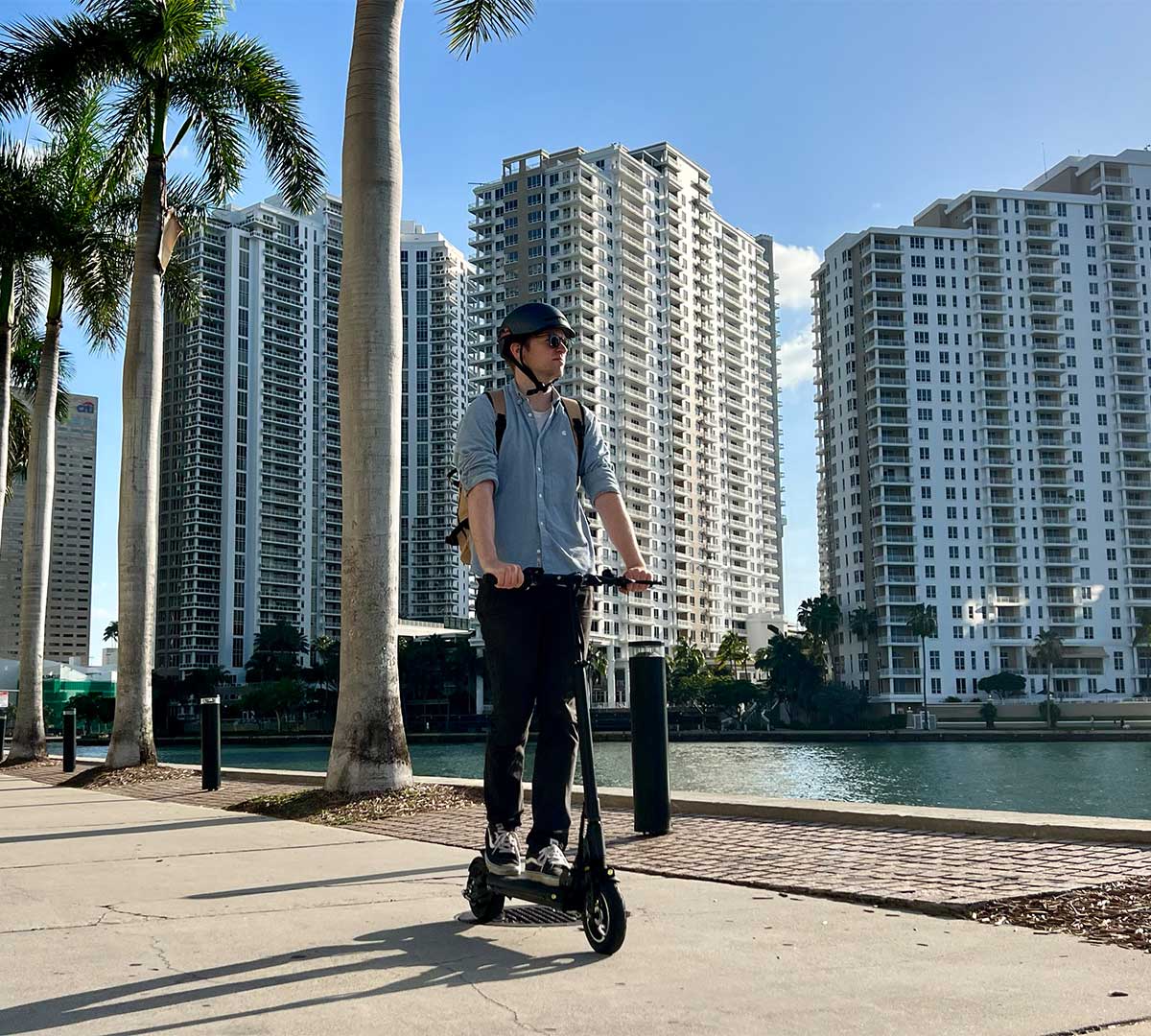Electric Scooter a Green Transport Revolution
- Read Time: 13 min
Dive into the electric scooter movement as a green transport revolution. Understand how e-scooters are reshaping urban landscapes by reducing emissions and congestion, while offering an efficient, sustainable alternative to traditional transportation methods.

Introduction

The need for sustainable transport solutions in urban environments has never been more pressing.
As cities worldwide continue to grow and urbanize at an unprecedented rate, the challenges associated with urban transportation are escalating.
Traffic congestion, air pollution, greenhouse gas emissions, and degradation of public spaces are just a few of the issues that cities are grappling with.
Therefore, an urgent need is to rethink and redesign urban transport systems to be more sustainable, efficient, and equitable.
Electric scooters have emerged as a popular and trendy option for short distance urban travel, catching the attention of both consumers and city planners alike.
Their appeal lies in their convenience, affordability, and the promise of a greener mode of transportation. Unlike cars or buses, electric scooters take up less space on roads and are highly maneuverable, making them well suited for navigating through congested city streets.
They produce zero emissions while on the road, reduce noise pollution, and are budget friendly, (if you get your own).
Greenhouse Gas Emissions
One of the most compelling arguments for the use of e-scooters in urban settings is their potential for reduced greenhouse gas (GHG) emissions when compared to internal combustion engine vehicles.
Firstly, electric scooters are powered by electric batteries, eliminating the direct carbon emissions of harmful pollutants and GHGs that come from standard vehicles. This means that electric scooters do not produce tailpipe emissions like carbon dioxide (CO2), nitrogen oxides (NOx), and particulate matter, which are significant contributors to both air pollution and climate change.
Secondly, electric scooters are highly efficient in terms of energy consumption per mile traveled. They require less energy to operate than larger, more complex vehicles, making them a more energy-efficient option for short distance travel. Their smaller size and lighter weight make them convenient while also meaning that they require less energy to manufacture, further contributing to their lower carbon footprint.
However, it's essential to note that the environmental benefits of electric scooters are maximized when the electricity used to charge them comes from renewable sources. If the electricity comes from fossil fuels, some of the benefits are negated, although they still generally emit fewer GHGs compared to conventional vehicles.
In summary, while electric scooters are not entirely without environmental impact, their potential for reduced GHG emissions, especially when compared to cars, buses, and motorcycles, makes them a valuable component of sustainable urban transport strategies and more environmentally friendly.
Carbon Footprint

The carbon footprint of e scooters is a multifaceted area that encompasses various stages of the e scooters lifespan. Production, usage, and disposal.
Each stage contributes to the total environmental impact of the e scooter.
Production
The production stage includes the manufacturing of all the e scooter components. The frame, the electric motor, and of course the battery. Most batteries in use need lithium-ion, cobalt, and nickel. This is where the negative impact on the environment is the heaviest. When extracting these materials.
As soon as this process has started, the carbon footprint of the e scooter is already accumulating.
Usage
When using it, the charging infrastructure is to be considered. If charged with renewable sources like wind or solar power the carbon footprint will be relatively low. If it is charged from fossil fuel sources, the benefits are diminished but even then, because of the e scooters small size and higher energy efficiency, it will be a better option for a daily commute and more eco friendly than a regular car.
Usage
When using it, the charging infrastructure is to be considered. If charged with renewable sources like wind or solar power the carbon footprint will be relatively low. If it is charged from fossil fuel sources, the benefits are diminished but even then, because of the e scooters small size and higher energy efficiency, it will be a better option for a daily commute and more eco friendly than a regular car.
Disposal
The disposal stage involves the end of life scenario for the scooter. This includes the energy and resources required for dismantling, as well as the challenges associated with battery disposal. Lithium-ion batteries are not entirely benign at the end of their life; they contain materials that are hazardous if not disposed of properly. While recycling programs exist, they are not always efficient in reclaiming the materials for reuse, leading to environmental impact.
Overall sustainability
All vehicles need to be manufactured which is a process requiring a lot of energy that is not particularly eco friendly.
But the electric revolution is here and with that, the electric scooter which is one of the cleverest of them all and could possibly be one of the smartest electric vehicles for a sustainable future. It is compact, convenient, easier to build, easier on the infrastructure, and doesn't create traffic congestion issues.
It is part of the green transportation revolution and everyone should have one and one day probably most will.
The overall emissions from the electric scooter can not be compared to those of bigger vehicles. Cars, buses, and motorcycles are much bigger and heavier and thus require more energy to produce as well as operate.
And since most of the journeys in the Western world are very short distances and usually with a single occupant per vehicle, the benefit of the electric scooter is undeniable.
Battery Production
Material Sourcing
The materials used in lithium-ion batteries, such as lithium, cobalt, and nickel, often come from mining activities. These activities can result in habitat destruction, soil and water pollution, and increased carbon emissions. There are also human rights concerns, such as child labor, in some cobalt mines.
Energy Intensive Manufacturing
The process of converting these raw materials into batteries is energy intensive and can contribute to GHG emissions, especially if the energy used in manufacturing is sourced from fossil fuels.
Battery Disposal
Short Lifespan
The batteries in electric scooters have a limited lifespan, often exacerbated by frequent use and lack of proper maintenance in scooter sharing programs. This results in a higher rate of battery replacements and, consequently, more waste.
Hazardous Waste
Used batteries contain materials that can be hazardous to the environment if not disposed of properly. While recycling programs exist, they are not always effective in reclaiming all the materials for reuse.
Recycling Challenges
Battery recycling is a complex and energy intensive process. Moreover, not all components can be efficiently reclaimed, leading to waste and environmental harm.
Shared electric scooters
The rapid turnover and potential wastage in shared electric scooter systems present significant environmental concerns. Many of these systems have gained popularity due to their convenience and low entry costs, but this has also led to issues that can compromise their sustainability.
Rapid Turnover
Short Lifespan
In many shared scooter systems, the scooters have surprisingly short lifespans sometimes as little as a few months. This is often due to high usage rates, vandalism, and lack of proper maintenance. A short lifespan means that scooters need to be replaced frequently, which in turn necessitates more production, thereby increasing their carbon footprint.
There are numerous reports of shared scooters being abandoned or improperly disposed of, ending up in landfills, or even in rivers and lakes. This improper disposal not only creates waste but also has broader ecological implications and does little for a sustainable future.
Solar Charging Stations
Renewable Energy
Using solar panels to power scooter charging stations can significantly reduce the carbon footprint of electric scooters. This makes the scooters more sustainable by eliminating the need for fossil fuel generated electricity.
Grid Support
These solar installations can also be designed to feed excess energy back into the grid, potentially offsetting the use of fossil fuels elsewhere.
Scalability
Solar charging stations can be easily scaled and incorporated into existing infrastructure, such as public parking areas or transit stations, making it convenient for users.
Battery Recycling and Second Life Applications
Closed Loop Systems
Companies are exploring closed loop recycling systems where old scooter batteries can be used to produce new ones, reducing the need for raw material extraction and the associated environmental impact.
Second Life Uses
Spent batteries from electric scooters can find a second life in less demanding applications, such as stationary energy storage systems, thus extending their useful life before they reach the end of life disposal stage.
Material Recovery
Advances in recycling technology are improving the efficiency of material recovery from used batteries, which can then be reused in new products, further reducing the environmental impact.
Electrification of Vehicles

Mass Adoption of Electric Vehicles (EVs)
Electric cars, buses, and two wheelers are expected to become increasingly prevalent as battery technology improves, costs come down, and charging infrastructure expands.
Commercial and Public Transport
Beyond personal vehicles, we can expect to see more electric buses, trains, and even electric airplanes and boats in the future.
Autonomous Vehicles
Self Driving Cars
Autonomous vehicles have the potential to optimize driving behavior for fuel efficiency better than human drivers. They could also facilitate shared mobility options, further reducing the number of cars on the road.
Public Transit
Self driving technology is also expected to make its way into public transport, potentially making it more efficient and accessible.
Shared Mobility
Ride Sharing and Car Sharing
These services could reduce the total number of vehicles needed, thereby reducing emissions and traffic congestion.
Micro Mobility
Shared bicycles and electric scooters can serve as eco friendly options for last mile connectivity, reducing the need for short car trips.
Active Transport

Cycling and Walking
There's an increasing focus on creating urban environments that encourage walking and cycling, both of which have negligible environmental impact.
Public Transit
Improved public transport networks can make it easier for people to opt for buses and trains over cars for daily commuting, reducing emissions per capita.
Alternative Fuels and Energy Sources
Hydrogen
Hydrogen fuel cells offer another avenue for sustainable transport, particularly for vehicles that require longer range and quicker refueling than current electric vehicles can offer, such as trucks and buses.
Biofuels
While not entirely without environmental impact, biofuels present a potentially more sustainable alternative to fossil fuels, especially for aviation and shipping.
Policy and Regulation
Emission Standards
Stricter emission standards will likely be enacted, pushing manufacturers toward greener technologies.
Incentives
Governments are likely to offer a range of incentives to encourage the adoption of electric and low emission vehicles, such as tax breaks, subsidies, and low emission zones.
Infrastructure
Public investment in charging infrastructure, cycling lanes, and pedestrian friendly streets will support the move toward more sustainable transport options.
The future of green transportation offers a blend of electrification, autonomous technologies, shared mobility services, and policy initiatives. All these aspects, guided by both technological innovations and societal shifts, are expected to contribute to a more sustainable and eco friendly transportation landscape.
Electric Scooters
The future of green electric scooters looks promising, with advancements in technology, design, and policy paving the way for more sustainable and efficient forms of urban mobility.
The battery technology is improving and we can expect longer lasting, more eco-friendly batteries expanding the lifespan of electric scooters.
The focus is also on making them more durable overall reducing the rate of turnover and associated waste and also making them a modular design, which will enable easier repair and replacement of individual components.
Using as many lightweight materials as possible could reduce energy consumption during rides, making the scooters more efficient.
As solar technology becomes more affordable and efficient, solar powered charging stations could become more commonplace.
As the market matures, more robust recycling programs are likely to be established, focusing on responsible disposal and recycling of old or damaged scooters and batteries.
The industry may develop systems for repurposing old scooter batteries for less demanding applications, such as grid storage.
Cities might offer incentives to users and companies to adopt greener modes of transport, which would include electric scooters.
As electric scooters become more ingrained in the urban transportation fabric, city planners might incorporate dedicated lanes or parking zones, making it easier and safer to use electric scooters.
In summary, the future of green electric scooters is likely to be shaped by advancements in technology, design innovations, more sustainable practices, and supportive policy measures. These developments collectively have the potential to make electric scooters an even more attractive and sustainable option for urban transportation.
Conclusion
Electric scooters offer immense potential to revolutionize green urban transport due to their low emissions, compact design, and convenience.
Advances in battery technology and sustainable practices like solar charging stations and recycling programs could make them even more eco-friendly.
However, challenges like the environmental cost of battery production, short lifespan, and rapid turnover in shared programs need to be addressed to fully maximize their potential and promise as a green transportation revolution.













![Complete US Electric Scooters Laws Guide [2024]](
//fluidfreeride.com/cdn/shop/articles/Complete-US-Electric-Scooters-Laws-Guide.jpg?v=1705996419
)

